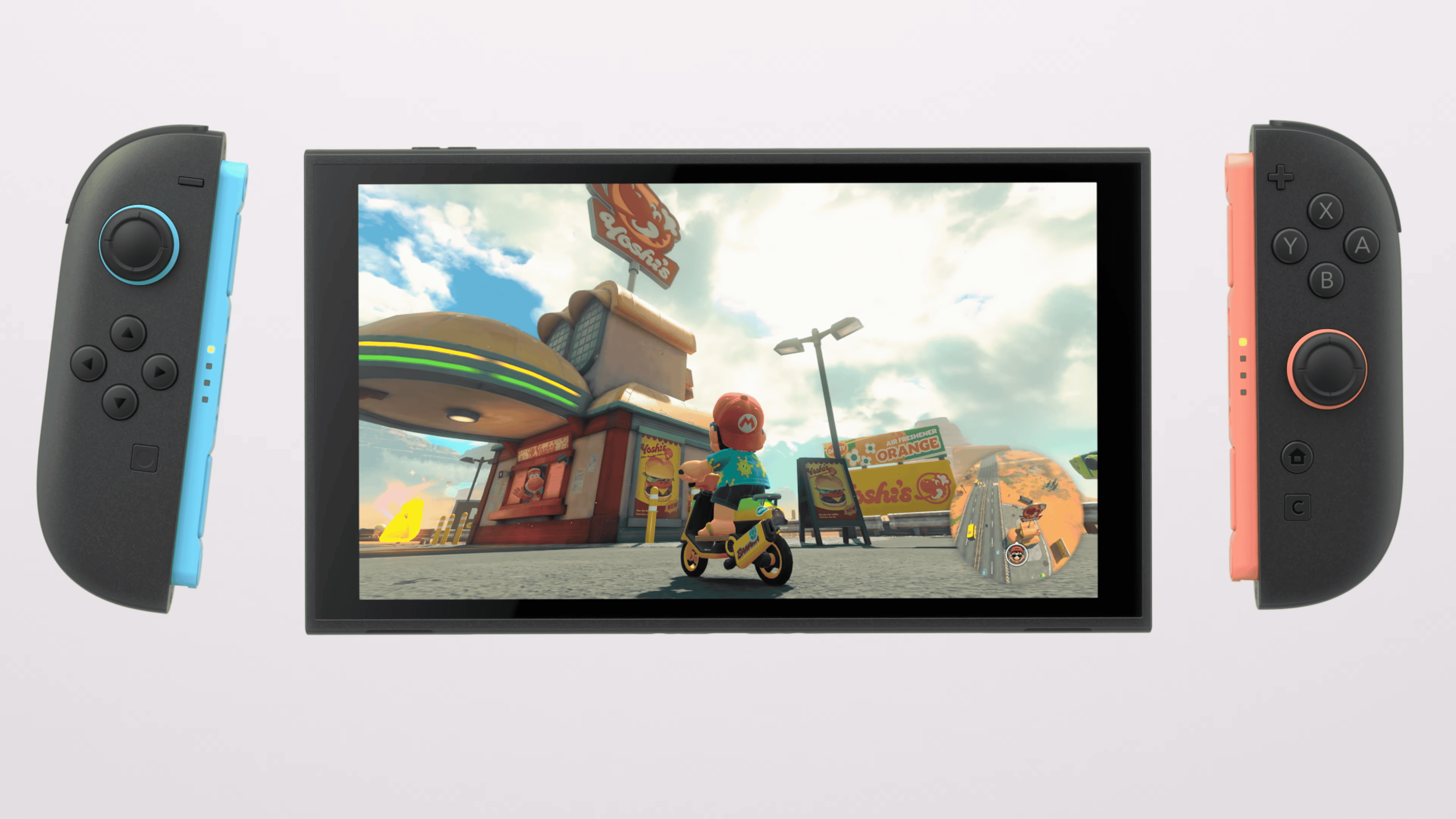Speculation has been running wild about potential price hikes for the Nintendo Switch 2 due to U.S. tariffs on electronics manufactured in China. However, according to industry insiders and recent statements from Nintendo, those rumors don’t hold much weight. The $449.99 price tag for the base model—and $499.99 for the Mario Kart World bundle—wasn’t slapped on in reaction to new trade policies. It’s the result of months of forward-looking planning that anticipated these geopolitical hurdles well in advance.
Why Tariff Rumors Don’t Tell the Whole Story
Tariffs Were Anticipated, Not Feared

Nintendo has a history of weathering global manufacturing shifts, and the Switch 2 rollout is no exception. Company executives, including Nintendo of America President Doug Bowser, have made it clear that the company factored potential tariffs into the console’s pricing strategy long ago. That means the price increase compared to the original Switch isn’t a sudden move to protect profit margins—it’s part of a calculated response to a changing global trade environment.
In fact, Nintendo began shifting a portion of its production to Vietnam years ago to hedge against trade risks from China. On top of that, supply chain sources suggest that Nintendo has been stockpiling units in U.S. warehouses to avoid any surprises ahead of the June 5, 2025 launch.
A Price That Reflects More Than Just Trade Policy
Let’s be honest: $449.99 is higher than what many fans were hoping for. But when you compare it to other modern consoles like the PS5 or Xbox Series X, it’s right in the ballpark. And the Switch 2 is expected to include significant hardware upgrades—a new Nvidia custom processor with DLSS support, higher-resolution display, better Joy-Con drift prevention, and enhanced battery life. All of that adds cost.
According to analysts, the roughly 20% increase over the original Switch’s launch price has more to do with modern component pricing, improved tech, and inflation than tariffs alone. As one market researcher put it, “The pricing includes a buffer for geopolitical instability, but it’s primarily driven by value and positioning, not fear.”
Nintendo Is Playing the Long Game
Nintendo has also delayed opening Switch 2 pre-orders in some markets. Some interpreted that as panic over tariffs—but in reality, it appears to be a tactical move to observe potential volatility without committing to shipment figures prematurely. The company is still expected to hit its production targets for the year, and it hasn’t signaled any concern about passing additional costs onto consumers beyond what’s already announced.
Moreover, Nintendo’s pricing leaves room for possible future bundles, limited editions, or cost-reduced models. By setting the initial price point high, they give themselves flexibility to introduce mid-cycle variations without devaluing the base unit early.
Conclusion: Don’t Blame Tariffs—Blame Strategy
In the end, the Switch 2’s $449.99 price isn’t an emergency reaction to U.S. trade policy—it’s the result of strategic forecasting. Nintendo has navigated global supply chain shifts and political uncertainty before, and this launch shows it’s doing so with foresight and stability.
So while tariffs may dominate the headlines, the reality is far more nuanced. Nintendo didn’t flinch—they factored in the risks, planned accordingly, and priced the Switch 2 to reflect both the market and the moment.
Key Takeaways
- Nintendo confirms tariffs did not influence the Switch 2’s $449.99 price tag.
- The company had already considered potential tariffs when establishing their pricing strategy.
- The $449.99 price reflects industry standards for modern gaming consoles rather than reactionary pricing.
Impact of Tariffs on Nintendo Switch 2 Pricing
The Nintendo Switch 2’s price point of $449.99 has raised questions about potential tariff impacts. However, evidence suggests Nintendo had already factored these possible trade costs into their pricing strategy before announcing the console.
Anticipation and Strategic Planning by Nintendo
Nintendo appears to have prepared for potential tariffs well before setting the Switch 2’s retail price. According to industry analysts, the company was aware that tariffs might be imposed and likely built these considerations into their initial pricing structure. When questioned directly about the $449.99 price tag, Nintendo representatives indicated that tariffs were not the driving factor behind the cost.
This proactive approach aligns with Nintendo’s typical business strategy of maintaining price stability after launch. As one analyst told Forbes, “It is not likely Nintendo will raise the price” in response to the tariffs. Even if adjustments become necessary, they would likely be more modest than the full 20% tariff rate.
Factors Influencing Nintendo Switch 2 Cost
The Switch 2’s pricing reflects several elements beyond potential tariffs. Nintendo executive Bill Trinen provided explanations to Polygon about why the console commands a $449.99 price point. These factors include:
- Manufacturing costs for advanced hardware components
- Inflation since the original Switch launched in 2017
- Research and development investments
- Production location shifts (possibly to Vietnam) to mitigate tariff impacts
Some analysts believe that while immediate price changes are unlikely, Nintendo might consider adjustments if tariffs persist long-term. The company must balance competitive pricing with profitability concerns. Their positioning suggests confidence that the console offers sufficient value at its current price point despite the challenging trade environment.
Market Dynamics and Nintendo Switch 2 Pre-Orders
Nintendo’s decision to delay Switch 2 pre-orders in the United States has created waves in the gaming industry, reflecting the complex interplay between international trade policies and gaming hardware launches.
Consumer Expectations and Market Speculation
Nintendo recently announced it would postpone Switch 2 pre-orders in the US, originally scheduled for April 9, 2025. This sudden change came after President Trump unveiled new tariffs that could affect imported gaming consoles.
The gaming community has responded with mixed reactions. Many fans were surprised by Nintendo’s quick response to the tariff announcement, especially since the console was expected to retail at around $450.
Industry analysts suggest Nintendo likely anticipated potential tariffs when planning the Switch 2 launch. One research firm stated it’s “not likely” the Switch 2 price will increase significantly due to these tariffs, indicating Nintendo may have built some buffer into their pricing strategy.
Some reports suggest Nintendo might consider selling the Switch 2 at a loss in the US market – a departure from their traditional approach. This would protect consumers from price increases while maintaining competitive positioning against other gaming platforms.
Doug Bowser, president of Nintendo of America, has not made detailed public statements about how these tariffs might affect upcoming Nintendo products like Mario Kart World or other Switch 2 launch titles.
Frequently Asked Questions
Many consumers have questions about the Nintendo Switch 2’s pricing, especially with recent tariff discussions in the news. Here are answers to the most common questions about the upcoming console’s price point and factors affecting it.
What is the expected retail price for the Nintendo Switch 2 in the United States?
The Nintendo Switch 2 is expected to retail for $449.99 in the United States. This price point was set by Nintendo before recent tariff discussions became public.
Nintendo has publicly stated that tariffs were not the reason for this price point, suggesting it was their intended launch price regardless of trade policy changes.
How could international trade policies potentially impact the cost of the Nintendo Switch 2?
International trade policies, particularly tariffs on electronics manufactured in China, could affect the Switch 2’s final retail price. However, analysts believe Nintendo likely factored these possibilities into their pricing strategy.
Some reports indicate Nintendo postponed Switch 2 pre-orders to “assess the potential impact of tariffs and evolving market conditions,” showing they’re monitoring the situation closely.
Is there an anticipated price difference for the Nintendo Switch 2 compared to its predecessor?
Yes, the Nintendo Switch 2 at $449.99 represents a price increase from the original Switch, which launched at $299.99 in 2017. This reflects both hardware improvements and inflation over the past seven years.
The higher price point aligns with industry trends of increasing console costs across manufacturers.
Does Nintendo have a mitigation strategy for possible tariff-induced expenses for the Switch 2?
Nintendo appears to have built tariff considerations into their pricing strategy already. Industry analysts note that even if tariffs are applied, Nintendo is unlikely to raise prices further.
One analyst stated, “It is not likely Nintendo will raise the price, and if they do, we don’t expect it to be 20%.” This suggests Nintendo has buffer room in their current pricing structure.
Are there confirmed reports regarding an increase in price for Nintendo Switch 2 games?
No confirmed reports exist about Nintendo Switch 2 game pricing increases specifically related to tariffs. Game pricing strategies remain separate from hardware considerations.
Standard game pricing may still evolve based on industry trends, but no tariff-specific increases have been announced for Switch 2 software.
What factors are contributing to the pricing structure of the upcoming Nintendo Switch 2?
Several factors influence the Switch 2’s $449.99 price point, including improved hardware specifications, increased manufacturing costs, and inflation since the original Switch’s release.
Supply chain considerations and component costs play a significant role, as semiconductor prices have fluctuated significantly in recent years.
Market positioning is another factor, as Nintendo aims to balance affordability against the need to support advanced features that consumers expect from a next-generation console.







